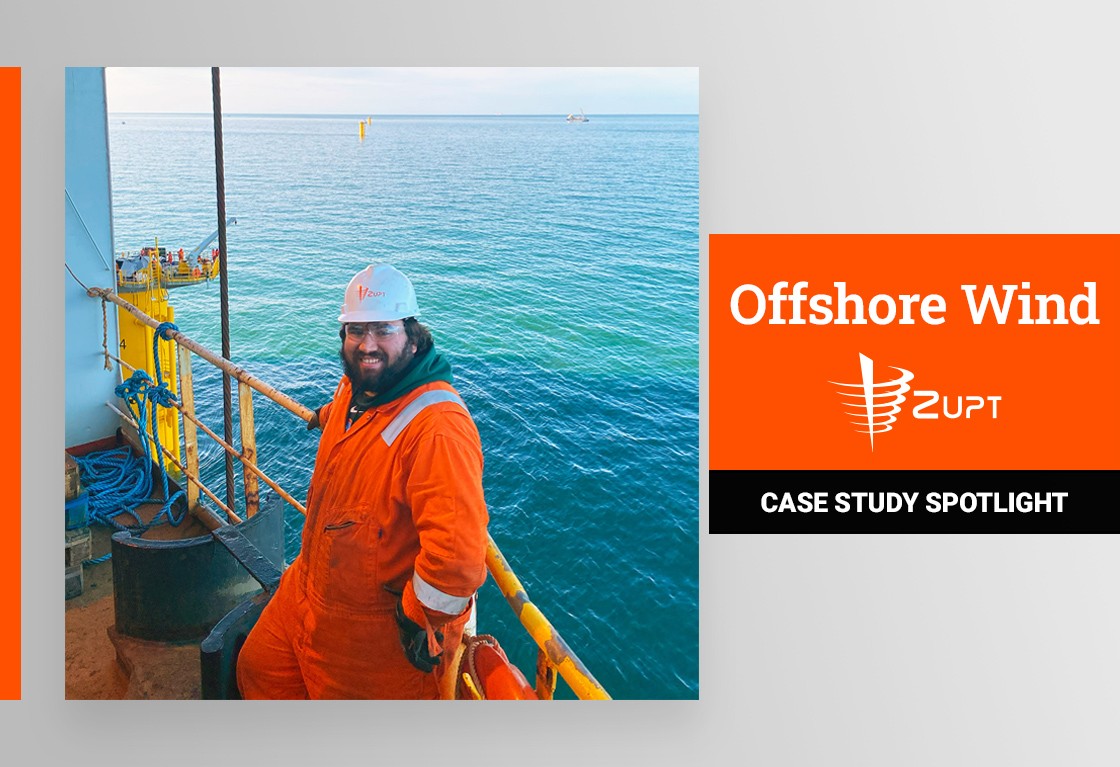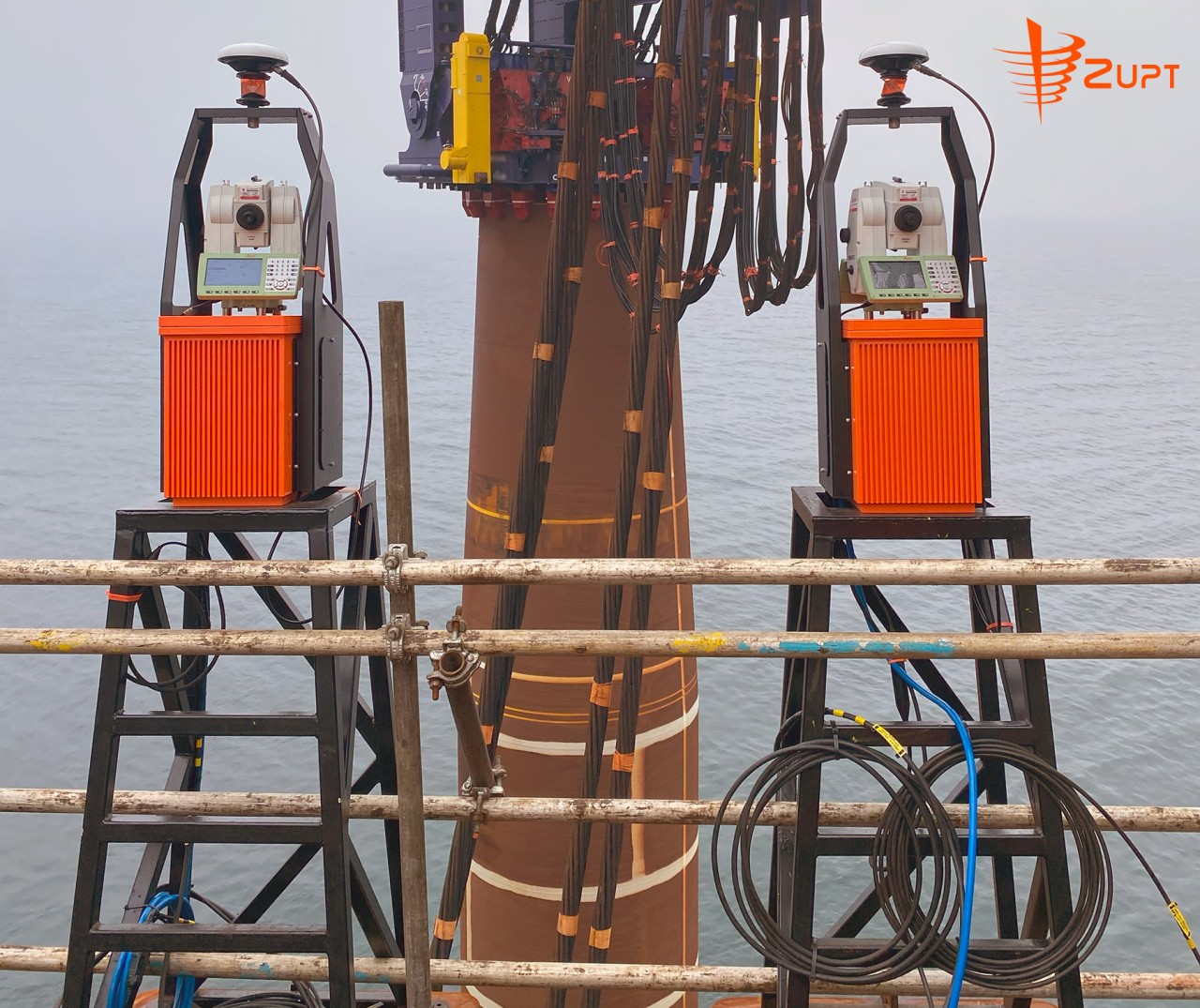Get in touch with us for any questions or quotes on surveying services and products. We will respond back as soon as we can.
Case Study Spotlight: Supporting Offshore Wind Development in France’s Renewable Energy Sector
Background
Zupt, LLC, a global leader in subsea positioning and navigation solutions, has long been recognized for its innovative approach to offshore energy operations, pushing efficiency to save valuable vessel time. While the company's expertise has traditionally been rooted in the subsea survey side of the oil and gas industry, Zupt made a notable pivot into the offshore renewables sector by securing multiple contracts on a major offshore wind farm project in France. This strategic shift highlights Zupt's adaptability, engineering excellence, and commitment to supporting the growing renewable energy industry.
The Offshore Wind Farm Project in France
This offshore wind project is currently underway and plays a critical role in advancing France's renewable energy ambitions. Like many wind farm installation efforts, it presents complex challenges, particularly due to the difficult geotechnical conditions offshore. These challenges are being addressed through a specialized installation method developed specifically for this environment.
The project uses a large subsea template to position and install each monopile. Monopiles must be installed with absolute precision to meet strict tolerances set by the end client. Once installed, a transition piece is placed and leveled on top of the monopile in preparation for the final wind turbine installation.Zupt's involvement in template positioning, monopile installation, and transition piece leveling demonstrates the company's ability to meet the sector's rigorous demands and reinforces its role as a complex systems-integrated engineering subcontractor.
Initial Contract: Subsea Template Monitoring
Zupt's engagement on this French offshore wind project began with its award of the subsea template monitoring scope. This contract required Zupt to provide approximately 50 survey sensors and engineering services to ensure the accurate placement of the subsea template on the seabed, as well as the correct alignment of the monopile within the template.
Leveraging its extensive experience in complex sensor integration and cutting-edge technology, Zupt developed a new 10GB multiplexor network switch. Twelve of these systems are deployed on the subsea template, serving as the backbone for an array of sensors and systems: cameras, pan/tilts, lights, proximity sensors, inclinometers, altimeters, AHRS, and more. These components are integrated through Zupt's custom-built monitoring software, which provides real-time data, live video feeds, and continuous data logging throughout operations.Innovation Through iRTS Technology
To meet these challenges, Zupt developed its Integrated Robotic Total Station (iRTS) system. The iRTS combines a navigation-grade Inertial Measurement Unit (IMU), RTK Global Navigation Satellite System (GNSS), and a robotic total station into one unified solution. The system delivers highly accurate, real-time positioning data while maintaining satellite visibility at all points during the monopile installation process.
Transition Piece Leveling Scope
Zupt is also currently supporting the transition piece (TP) leveling phase of the project. This stage requires precise, real-time leveling of the transition piece, which rests atop the installed monopile. Zupt's high-end inertial navigation systems are ideally suited to this task.
To support the work, Zupt's custom-developed software integrates data from the IMU, GNSS antennas, and manual measurements taken from inside the transition piece. The software continuously calculates real-time leveling data and includes a clash detection tool that determines the annulus between the monopile (MP) and the TP. This real-time capability allows the installation team to make informed decisions quickly and confidently, ensuring accurate and secure placement.Project Impact and Future Prospects
Zupt's work on this French offshore wind farm highlights the company's ability to adapt and deploy subsea technologies within the renewables space. The combination of in-house hardware development, software engineering, and sensor integration has led to increased installation accuracy and reduced offshore time.
The deployment of the iRTS system and real-time leveling software further positions Zupt as a trusted engineering partner in the offshore wind sector. These tools are not only improving the current project but also providing a strong foundation for future renewables work.Conclusion
Zupt, LLC's active role in this French offshore wind farm underscores its engineering expertise and growing commitment to renewable energy. By successfully executing multiple scopes, including subsea template monitoring, monopile installation with iRTS technology, and transition piece leveling, Zupt is delivering innovative solutions that support the global transition to sustainable offshore energy.


